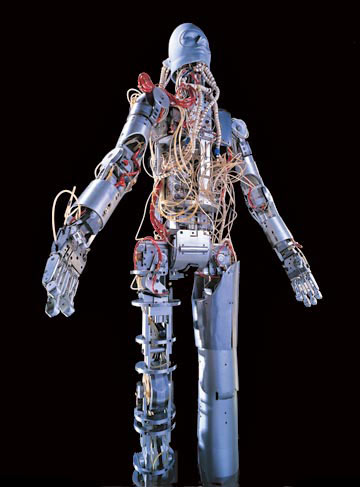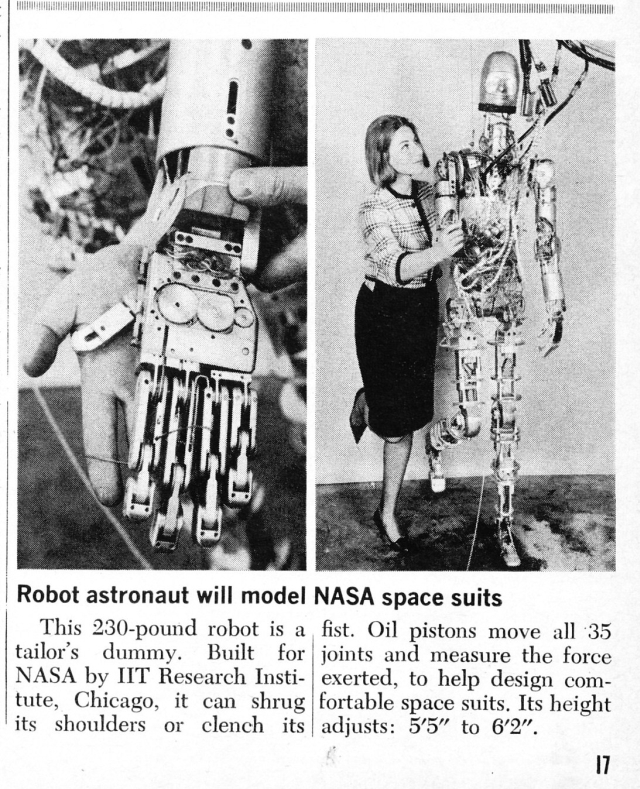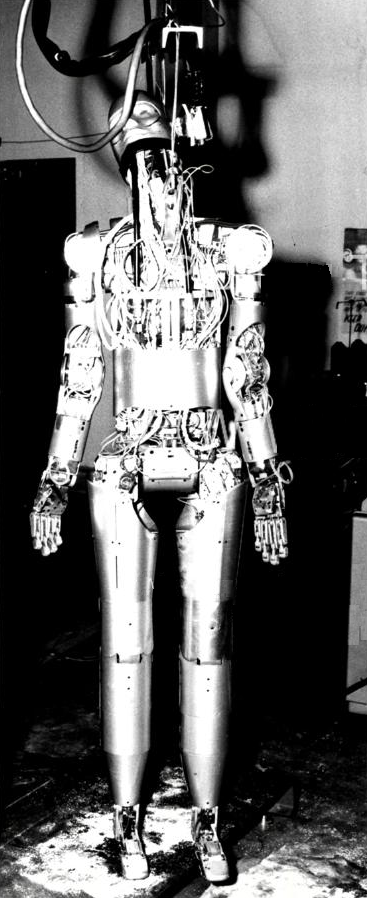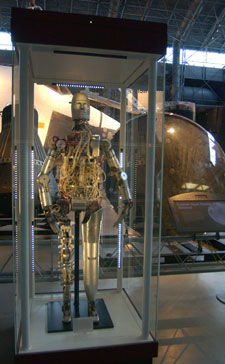

Source: Popular Mechanics August 1965.
Robot Flexes 35 Joints to Test Space Suits – Popular Science May 1967.
When you do physical work—pushing, pulling, lifting, twisting, gripping—you encounter resistance. but how many pounds of force must you exert to overcome it? It's difficult to gauge. That's the job these articulated dummies are built to do. By measuring precisely the forces imposed on au astronauts muscles by his pressurized space suit, they will help engineers design a suit that's less tiring to work in.
The dummies reproduce 35 basic human movements, ranging from arm, hand, and leg manipulations to bending and rotating at the waist. If you shake hands with a malicious squeeze, they can really give you your money's worth, yet they can gently pick up all egg without breaking it.
The nylon-tube circulatory system of the mechanical men carries lightweight oil at body temperature and at a pressure of 1,000 pounds per square inch. In response to signals from the electrical nervous system, servo valves open and close to direct oil to hydraulic actuators—the "muscles." And these dummies are muscular. They can move their arms forward with a torque of 850 pound-inches, bend forward at the hips with 2,760 pound-inches of torque. or shake hands with nearly 300 pound-inches of force.
The dummies. designed by the Illinois Institute of Technology for the National Aeronautics and Space Administration, are superhuman in another respect: They can be adjusted in size—at neck, shoulders, arms. waist, and legs—to approximate the size of 90 percent of young adult males.
Over the 1 /32-inch aluminum skin is fitted a space suit to be tested. "Move your arm upward: commands the operator by turning a potentiometer. The dummy obeys. and a built-in stress element at the arm joint measures exactly how much torque the movement requires. At the same time, a feedback potentiometer compares the position of the arm to the position commanded.
While the dummies are not self-contained and cannot walk, engineers believe these two problems could be overcome with more research. Add a brain and you've got the first real robot!—Ted Anderson.



Now a Museum exhibit.
See other early Humanoid Robots here.